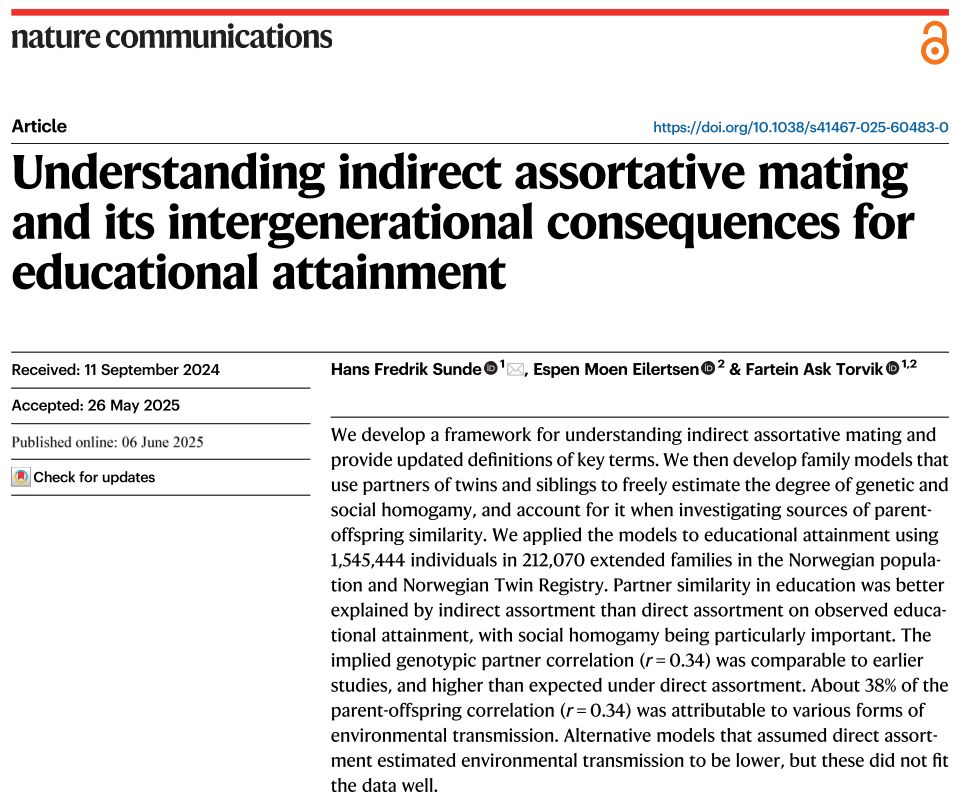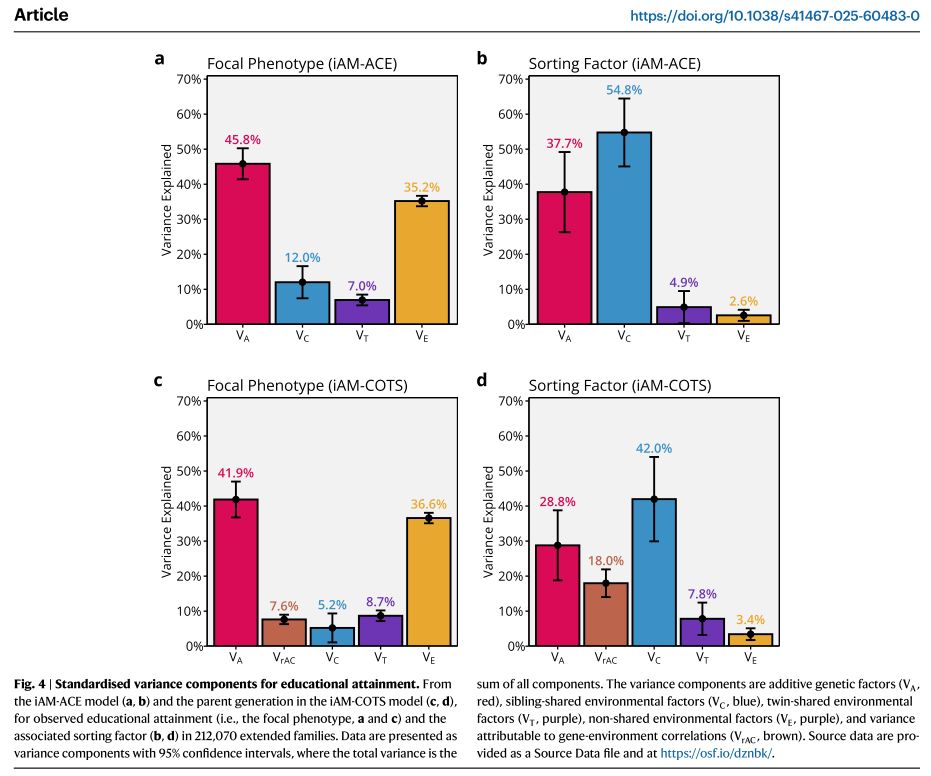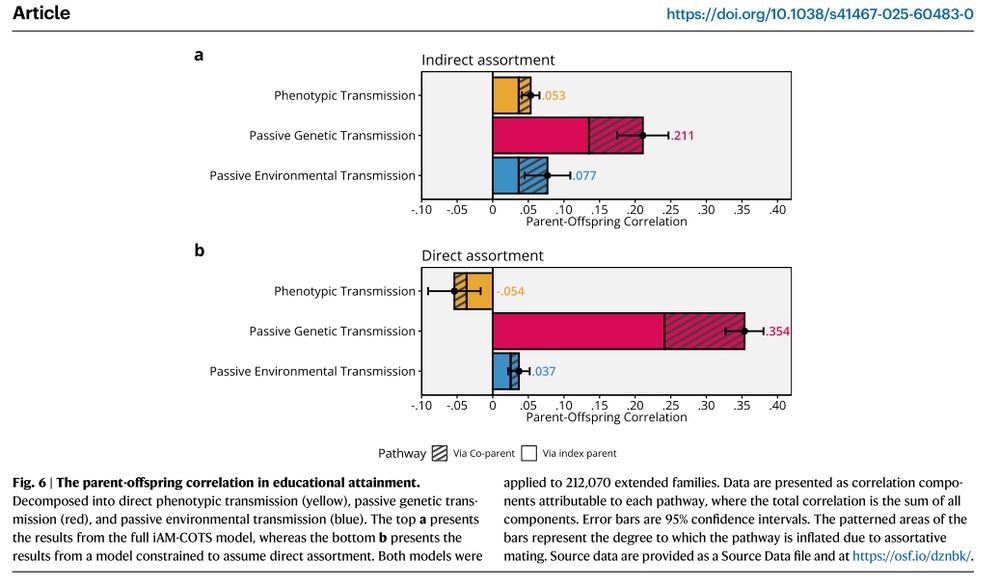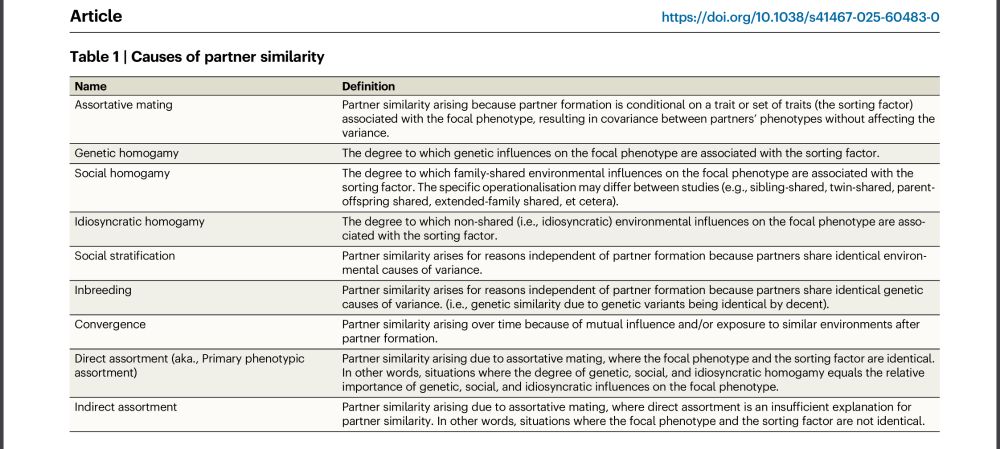Key insights (2/2)
• 10 years later, employed grandmothers are 12% less likely to work full-time, compared to a 2% reduction for grandfathers. Women also see larger income drops.
• The gendered patterns in infections + employment suggest women still are more involved in informal childcare provision.
20.11.2025 15:47 — 👍 3 🔁 1 💬 1 📌 0
Key insights (1/2)
• Respiratory infections jump in the first years of grandparenthood: +56% for women, +31% for men
• Grandparents are slightly less likely to see a doctor for mental disorders (−4.5%) & cardiovascular issues (−3.3%)
• Grandmothers have fewer musculoskeletal-related visits (−3.8%)
20.11.2025 15:47 — 👍 3 🔁 1 💬 1 📌 0

Figure showing event-study plots centred around the birth of one's first grandchild. The left plot shows health changes, the right shows labour market changes (separated by grandparent gender).

The image shows the following abstract:
The Cost of Caring: Gendered Health and Labour Market Effects of Grandparenthood
While the effects of the transition to parenthood are well-researched, less is known about how the transition to grandparenthood affects health and labour market outcomes. Using comprehensive Norwegian register data covering the entire population born between 1950 and 1960, we examine the effects of first-born grandchildren born during 2007–2018. Employing event-study models with person-year records, we compare grandparents to not-yet grandparents. Our findings reveal a sharp increase in the likelihood of respiratory infections during the first two years of grandparenthood, with infections increasing by 56% for women and 31% for men. Additionally, grandparenthood modestly reduces the likelihood of doctor’s visits related to mental disorders (4.5%) and cardiovascular health (3.3%). Grandmothers also see a decline in musculoskeletal-related visits (3.8%). These health-related changes coincide with notable gendered effects on labour market participation. Ten years after the birth of their first grandchild, employed women are 12% less likely to hold full-time positions compared to a 2% reduction for men. Overall, our findings demonstrate that the transition to grandparenthood significantly reshapes health and economic outcomes for both women and men. The larger effects observed for women likely reflect their greater involvement in informal childcare provision. Our results underscore the intersection of health, family dynamics, and gendered labour market behaviours in late adulthood.
New preprint📈📉
What happens to health and work when people become grandparents? Using Norwegian register data on all individuals born 1950-1960, we use event-study models comparing grandparents to not-yet grandparents to track changes in health and labour supply.
🔗 www.ssrn.com/abstract=571...
20.11.2025 15:47 — 👍 11 🔁 7 💬 1 📌 3
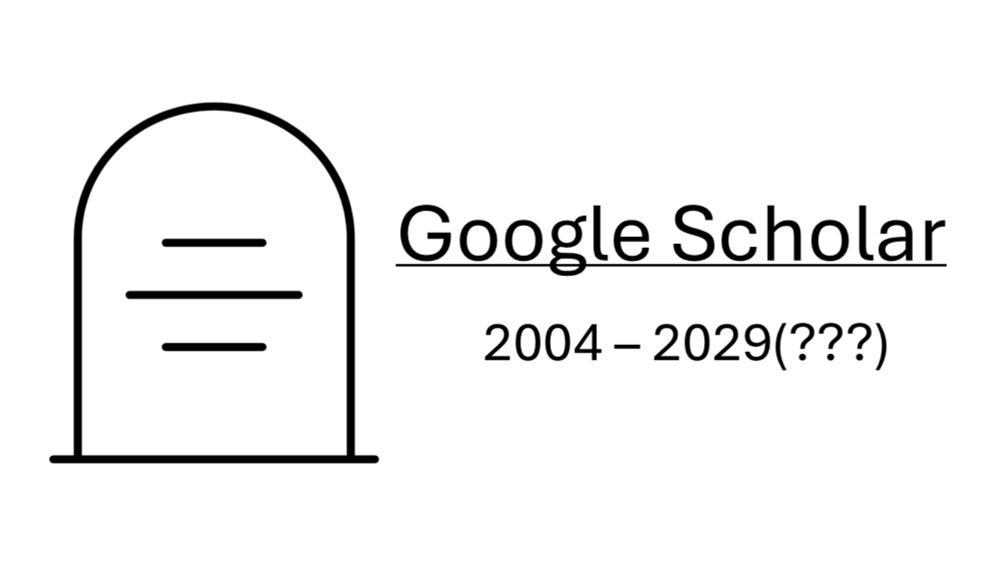
Google Scholar Is Doomed
Academia built entire careers on a free Google service with zero guarantees. What could go wrong?
Since search is dead, how soon do you think Google Scholar is headed for the Google Graveyard? I'm betting it's soon, and academia is NOT prepared
13.08.2025 01:28 — 👍 782 🔁 362 💬 54 📌 110
Here is a free link to the paper if you don't have access:: onlinelibrary.wiley.com/share/author...
I also wrote a more detailed thread when I posted the preprint last year. Check it out here if you are interested: bsky.app/profile/hfsu...
04.08.2025 20:45 — 👍 1 🔁 2 💬 1 📌 0

Accompanying the paper is an interactive web page with figures and tables showing the prevalence of psychological codes in the ICPC-2 by age, sex, and parental income quartile. Check it out here:
hfsu.shinyapps.io/prevalence_b...
04.08.2025 20:45 — 👍 3 🔁 2 💬 1 📌 0
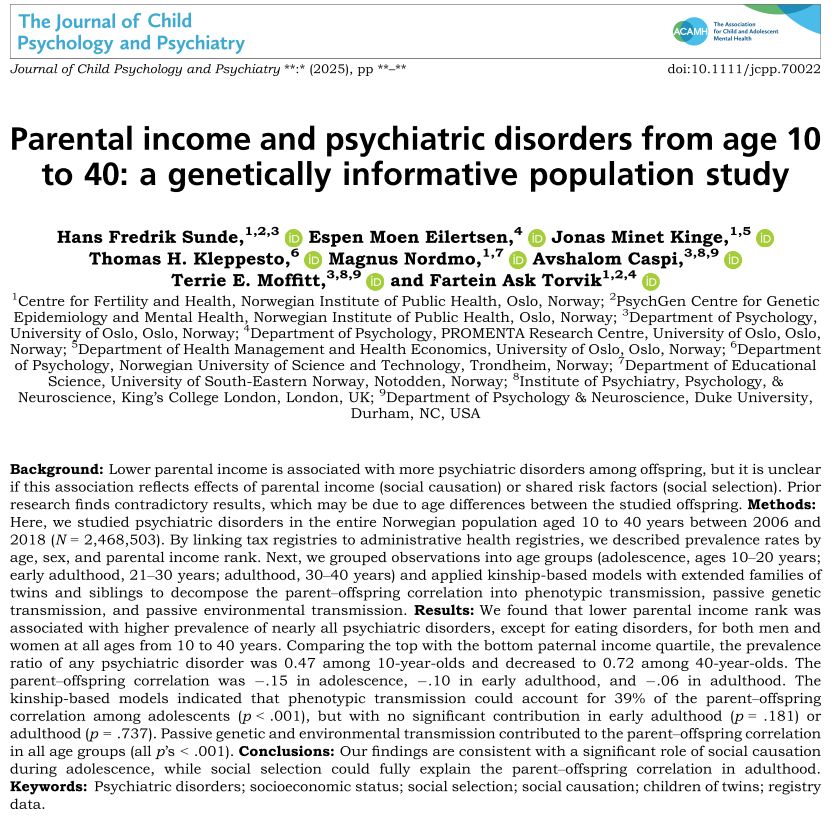
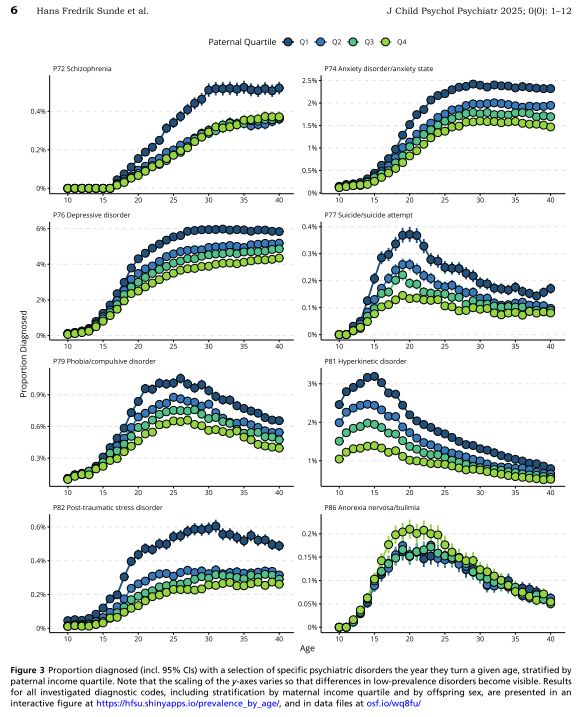
Our new paper is out today! 🎉 In it, we use administrative register data to document how psychiatric disorders are strongly linked to parental income, from childhood far into adulthood. Furthermore, we attempt to separate causation and selection using kinship-based models.
doi.org/10.1111/jcpp...
04.08.2025 20:45 — 👍 41 🔁 15 💬 1 📌 2
Our new study is just out in Psychological Science! We study cognitive ability at age 18 and mental health 20 years later in 270k Norwegian men. We include different mental disorders, compare education by ability, and run sibling-fixed effects. Check it out here: doi.org/10.1177/0956...
28.06.2025 11:32 — 👍 20 🔁 8 💬 0 📌 1

3/7
🎓 Educational attainment also independently predicted better mental health.
But the highest risk was for men who were low in both cognition and education.
This group faced the highest probability of adult psychiatric diagnoses.
28.06.2025 09:58 — 👍 3 🔁 1 💬 1 📌 0

🧵1/7
New study: How do adolescent cognitive ability and education predict adult mental disorders?
🧠📚➜🧑⚕️
Using Norwegian register data (N = 272,351 men) of GP diagnoses and military assessed cognitive abilities.
👇
28.06.2025 09:58 — 👍 23 🔁 9 💬 3 📌 2
https://osf.io/preprints/psyarxiv/b4c76_v1
1/13 New preprint out! We developed methods to test a key assumption in family-based genetic studies: that siblings don’t genetically influence each other’s traits. Spoiler: mostly they don’t, but there’s a twist with ADHD ratings at age 3 👶
osf.io/preprints/ps...
10.06.2025 10:22 — 👍 23 🔁 16 💬 2 📌 1


I will write a detailed thread next week. If something is confusing until then, I highly recommend the supplementary notes, where I go through the logic more slowly and in greater depth.
06.06.2025 18:01 — 👍 2 🔁 1 💬 0 📌 0

Our paper on indirect assortative mating is now out in @natcomms.nature.com! In it, we provide refined definitions of terms used to explain partner similarity, develop statistical models, and find evidence of surprisingly high social homogamy for education.
Link: doi.org/10.1038/s414...
06.06.2025 18:01 — 👍 32 🔁 8 💬 1 📌 0
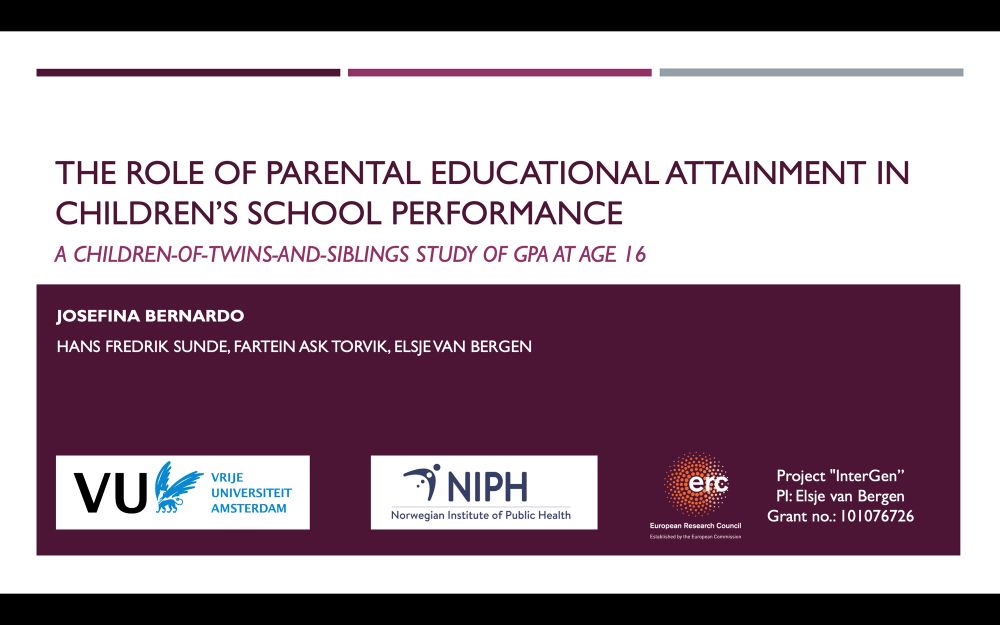
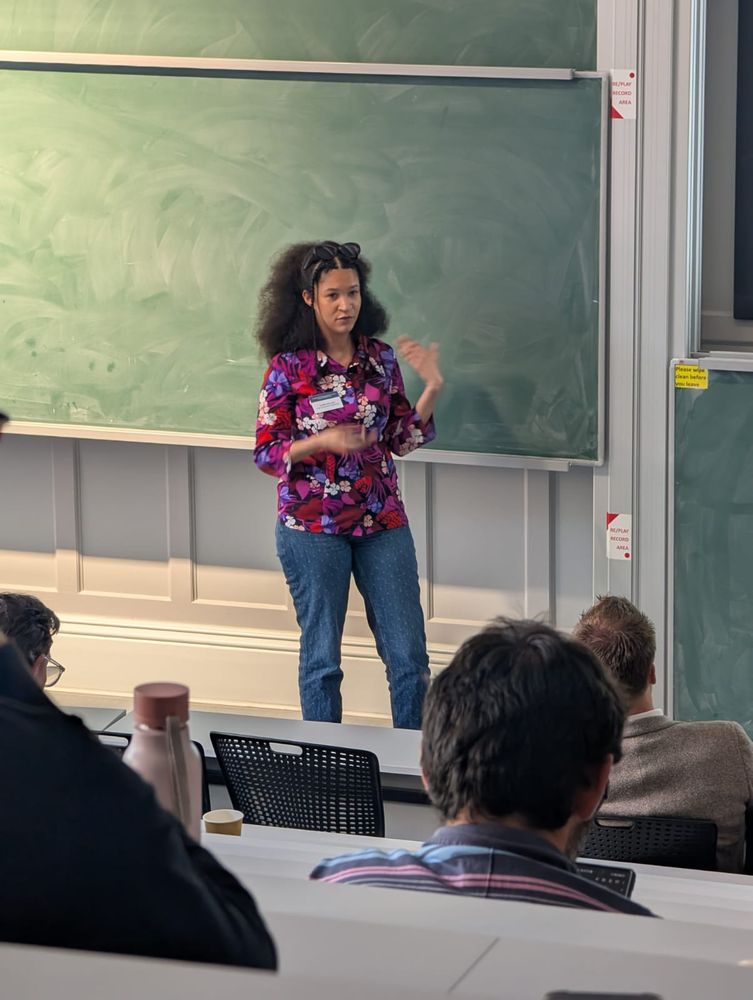
Very grateful that I got to present at the ESSGN past Friday. In the study I presented, we looked at intergenerational transmission of education in a sample of the Norwegian population register. We used a Children-of-Twins model to look at GPA at age 16 and educational attainment in the parents.
26.05.2025 18:00 — 👍 19 🔁 5 💬 1 📌 0

Main figure of the paper: Associations between parental mental health (anxiety and depression, alcohol problematic use, ADHD, eating disorder) with children's tests scores in mathematics, reading comprehension and English as second language at age 10.
New preprint!
We find no evidence that parental mental health influences children's academic achievement when comparing families in the Norwegian MoBa study.
osf.io/preprints/ps...
Quick thread 👇
16.04.2025 10:35 — 👍 57 🔁 20 💬 1 📌 1

🚨 Big question, big paper! Why does educational inequality run in families?
The parent-child education link (r = .31) is often seen as purely environmental.
From 569k kids, we decomposed it:
🧬 68% genetic
🏡 12% parental environment
👴 20% extended-family environment
👉 doi.org/10.31234/osf...
🧵
13.04.2025 08:23 — 👍 59 🔁 25 💬 3 📌 1
Vi har et skrikende behov for kunnskap for å møte vår tids utfordringer, med fallende skoleprestasjoner og økt fravær.
Derfor er det avgjørende med et nasjonalt individdataregister fra skoler og barnehager, mener Camilla Stoltenberg, @martinflato.bsky.social, @torvik.bsky.social og Karin Monstad.
01.04.2025 08:03 — 👍 0 🔁 2 💬 1 📌 0

Fleksibel skolestart
Det er på høy tid at barnas behov settes foran systemets krav.
I dag får bare 0,6 % av barn utsatt skolestart i Norge. Det er alt for få, og det kan ha alvorlige konsekvenser for umodne barn
www.nrk.no/ytring/fleks...
10.02.2025 11:53 — 👍 4 🔁 1 💬 0 📌 1

Nasjonale skjermråd – nå!
Foreldre trenger tydelige råd om barn og skjermbruk, ikke mumlete anbefalinger som ingen oppfatter.
Hvorfor er det tilsynelatende umulig for folk å forstå at dersom statens råd skal ha legitimitet så må de være basert på forskning og fakta og ikke bare være noe som mest mulig er på linje med følelsene til ressurssterke bekymrede foreldre? Og at man kan gjøre ting uten at staten sier det?
26.01.2025 20:06 — 👍 47 🔁 4 💬 5 📌 1
(10/10) A big thank you to my excellent co-authors! @hfsunde.bsky.social, @rosacheesman.bsky.social, Nikolai Eftedal, Matthew C. Keller, @eivindy.bsky.social, and Espen M. Eilertsen
03.12.2024 13:18 — 👍 1 🔁 0 💬 0 📌 0

(9/10) Several reasons besides direct assortment can explain partner similarities. In this paper, we cannot determine which processes are most important. However, we can distinguish between these in future research.
03.12.2024 13:18 — 👍 0 🔁 0 💬 1 📌 0

(8/10) Could health similarities be by-products of partner choice based on education? To some extent—partner correlations in health were reduced by 30–40% after accounting for educational attainment in adulthood or school grades at age 16.
03.12.2024 13:18 — 👍 1 🔁 1 💬 1 📌 0

(7/10) Do mental health and education determine partner choice? Many studies assume so-called direct assortment. If direct assortment fully explains partner choice, it would be easy to predict correlations between siblings-in-law. But they are much more similar than expected under direct assortment.
03.12.2024 13:18 — 👍 0 🔁 0 💬 1 📌 0
(6/10) This means that children with a mental disorder are more likely to have another parent with a mental disorder or with low education. This matters for the distribution of both genetic and environmental risk factors among children.
03.12.2024 13:18 — 👍 0 🔁 0 💬 1 📌 0

(5/10) Below, we see near universal cross-trait assortment. In the prospective data, partner correlations are as strong between different mental disorders as for the same mental disorders. Later in life, partners were more likely to have the same mental disorder (see paper).
03.12.2024 13:18 — 👍 0 🔁 0 💬 1 📌 0

(4/10) We see strong similarity in education, as expected, and also for school grades at 16. In dark blue, we see that partners' mental health was correlated from the start. But cross-sectional studies likely overestimate assortment. In red, we see that mental health became more similar over time.
03.12.2024 13:18 — 👍 0 🔁 0 💬 1 📌 0
A/Prof @CREATE, U of Oslo
Reading & math development | Learning difficulties | Motivation | Learning environments | Longitudinal & developmental research
📚➗🏠
https://scholar.google.com/citations?hl=nl&user=rj7cY8sAAAAJ&view_op=list_works&sortby=pubdate
Noen liker mora, andre liker Forsberg.
Byplanlegger som jobber med gater og sykkeltilrettelegging. Lokalpolitiker i Gamle Oslo MDG. Anarkistisk fotgjenger og gatetunfan.
Samfunnsengasjert og kritisk tenkende. Setter menneskeverd, rettigheter, kunnskap, mangfold og verdibevissthet høyt.Tidl sykepl, politi/høgsklektor. Har et 💚 for LEAP, #narkosky, 🏳️⚧️🏳️🌈, ME/LC, MDG og kampen for en inkluderende bærekraftig klode.
Women’s Health research 🚺| 4M consortium 🩸| Epidemiology 👩🏻💻| Cats 🐈 | Otters 🦦
PhD student & teaching assistant in Demography (UCLouvain, Belgium).
Interest: childlessness, family dynamics, social inequalities, fertility, lifecourse research.
University of Utah Associate Professor of Sociology. FUN AND GAMES.
You can find my work here: https://scholar.google.com/citations?hl=en&user=OdsQSfkAAAAJ&view_op=list_works&sortby=pubdate
Global Healthcare Services Manager @ Hyland | Passionate about healthcare, digital health, AI & cloud | BSc, PRINCE2, MSP, L6σ Green Belt | Opinions are my own | https://linktr.ee/paulcochrane
Associate professor of psychology at NTNU. Father. Clinician. Interested in individual differences, evolution, and the growth of knowledge.
PhD Candidate at PROMENTA, University of Oslo
Researching School Reform Effects on Adolescent Mental Health
Political scientist and PhD student at Norwegian institute of Public Health
Ph.D in educational psychology at the University of Oslo. Lecturer in SpedEd at the department of vocational education at Oslo Metropolitan University. 🇳🇴🇲🇽🏳️🌈
Prof of Scandinavian Linguistics @uitnorgesarktiske.bsky.social and Director of C-LaBL @c-labl.bsky.social; prof II @ Western Norway University of Applied Sciences. Syntactic variation; multilectal literacy; Sámi language revitalization etc.
Psychiatric epidemiologist and Assistant Professor @UCalgaryMed 🇨🇦. Researching mental health and well-being across the life course and with an equity lens. Childless cat lady 🐈⬛🐈⬛. Views mine. She/her ✨ fairlab.ca
Psychology, psychiatry, statistics, sleep, genomics, genetics, armchair science philosophy.
Associate prof @unioslo-heled.bsky.social | Leader of Fødselstallsutvalget and the Norwegian Demograhic Society | Centre for Fertility and Health, NIPH | sites.google.com/site/rannveighart
Postdoc Bielefeld University
Social Inequality - Sociogenomics - Statistics
🧑🧒🧒 Clinical Psychologist specialising in child and adolescent psychology
🧠 PhD student working on emotional problem development, brain and risk factors
@PROMENTA, University of Oslo 🇳🇴
PhD student at Max Planck Institute for Demographic Research & University of Helsinki | working on family dynamics & health
Psykologspesialist, jobber i somatisk spesialisthtj m #helse, #helsepsykologi, #kunnskapsdeling, #psykisk og #kvalitet. Også opptatt av #helserett, #utviklingshemming, #helsepolitikk og #endringsprosesser.
#HealthPsychology #Psychology #QualityImprovement








